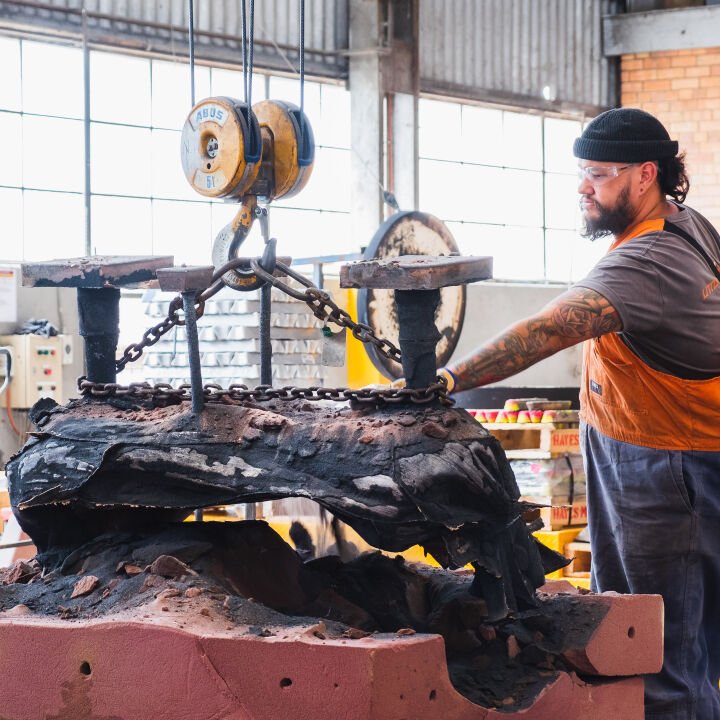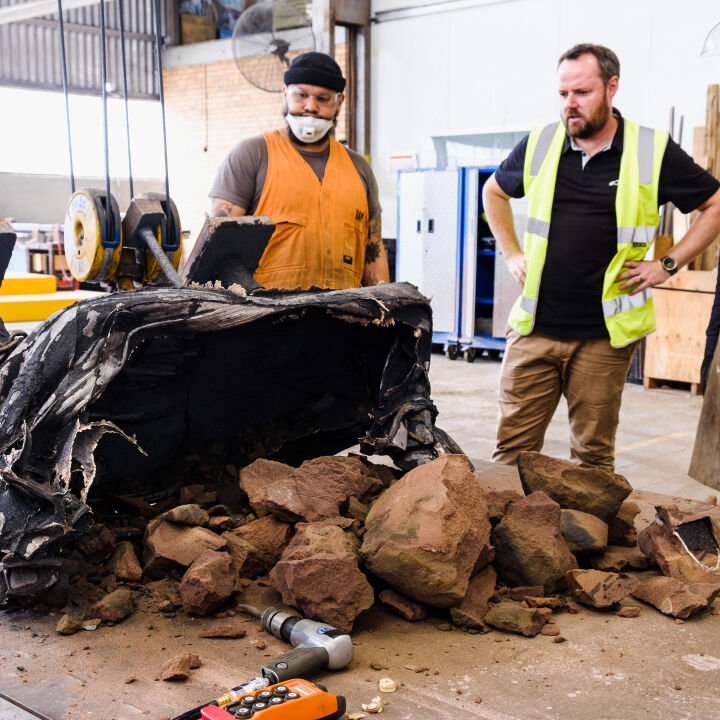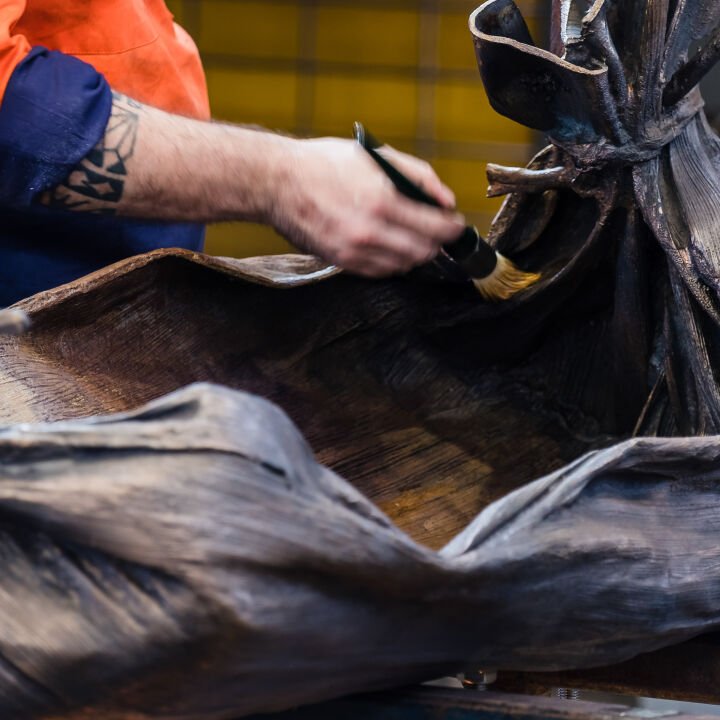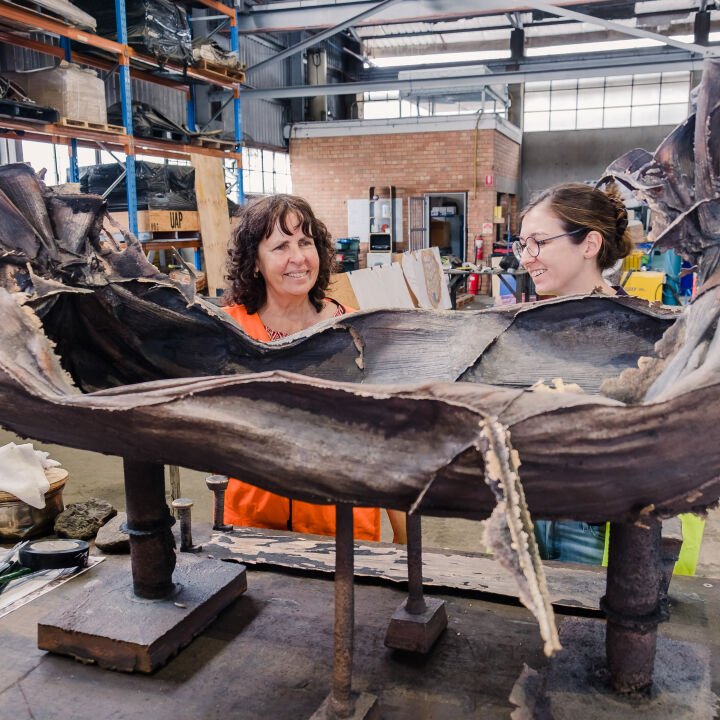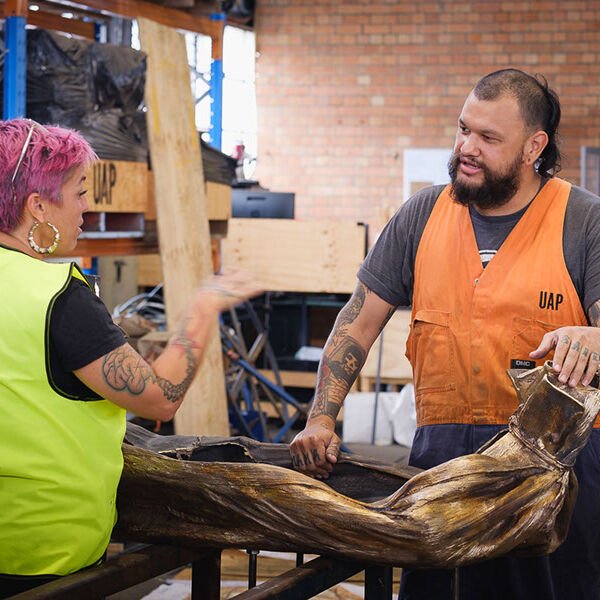In the Workshop: Foundry
Occasionally, a project will reach the floor that requires an especially complex casting process – recently, this challenge came in the form of Libby Harward’s Piccabeen Basket, a work conceived in collaboration with Judy Watson for Gold Coast’s HOTA.
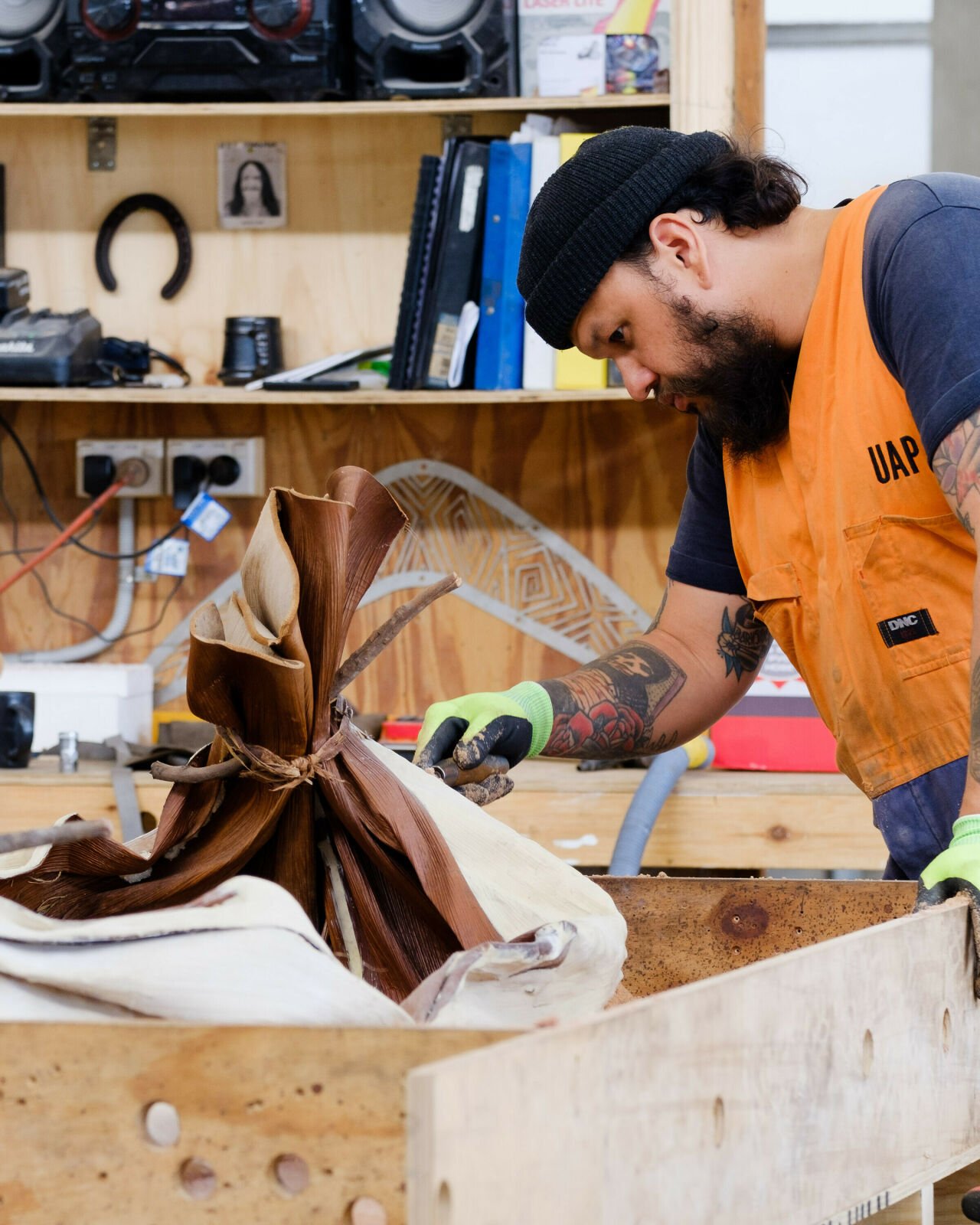
#Day to day, the UAP foundry produces a plethora of metal artworks: creative interpretations of everyday objects, human and animal figures, upsized existing small works, and original concepts devised specifically for the metal medium.
Occasionally, a project will reach the floor that requires an especially complex casting process – recently, this challenge came in the form of Libby Harward’s Piccabeen Basket, a work conceived in collaboration with Judy Watson for Gold Coast’s HOTA. Honouring the traditional method of shaping and joining Piccabeen Palm fronds to create a basket, the UAP team were tasked with translating this handcrafted natural object into a permanent metal sculpture.
The original Piccabeen basket provided by Harward was used directly as the casting pattern, but the final bronze basket needed to be slightly thicker and required some adjustment. Careful measures were taken to adjust the pattern while still capturing and retaining the distinctive inherent characteristics of the basket.
Artist Libby Harward creating the original Piccabeen Basket
Re-wetting and flattening the fronds, Head of Pattern Making Jerko Starcevic took rubber moulds of the Piccabeen leaf shape and texture to create plasticine additions. The plasticine was precisely applied and the basket’s contours were finessed by Jerko, delivering to the Foundry team a finalised pattern to be reproduced in bronze. It’s common for complex or large artworks to be cast in multiple sections using multiple moulds, and later welded together to create the final work. Piccabeen Basket, however, needed to be cast in a single piece. This required a sand mould that encapsulated the entire shape of the work, while preserving its essential intricate details.
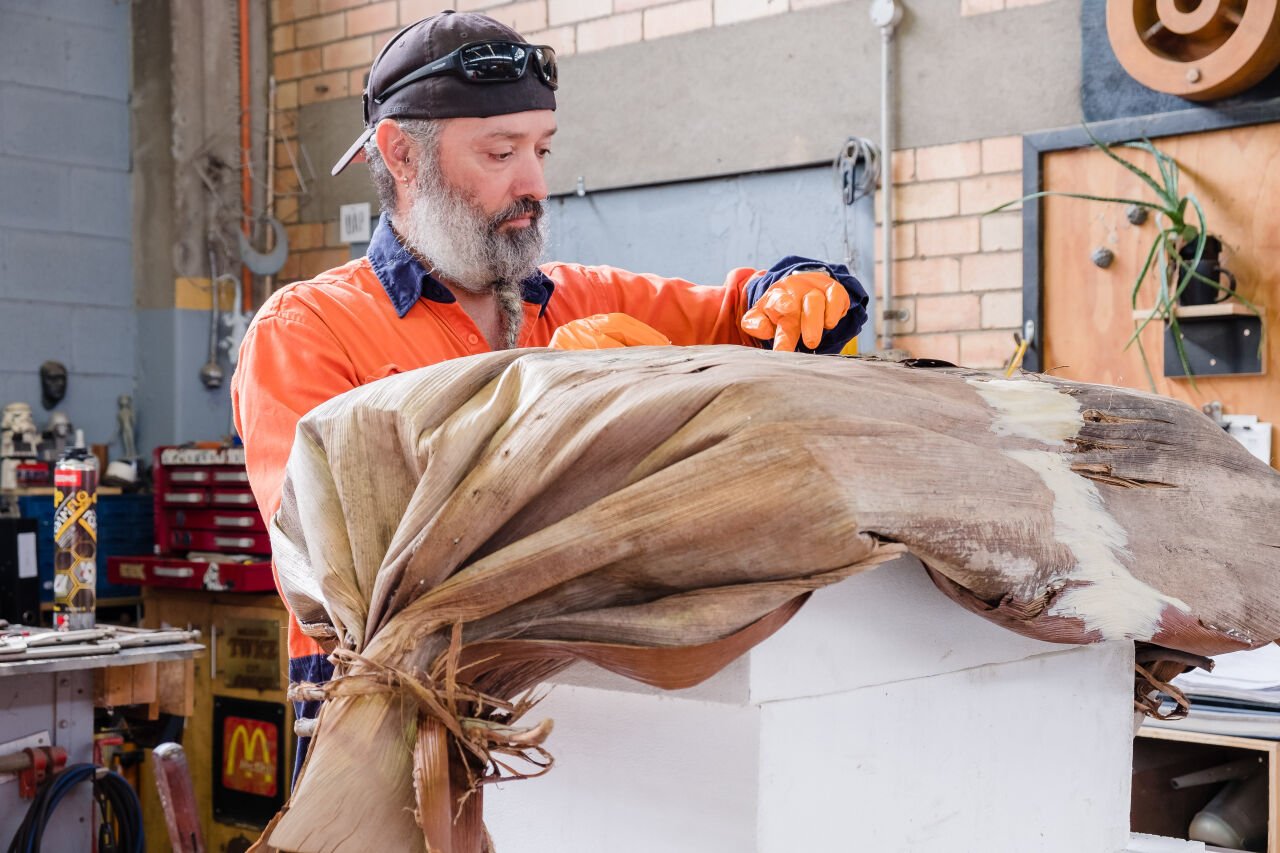
Head of Pattern Making Jerko Starcevic
Lead Pattern Maker Ian Kath describes the resulting mould as a ‘3D jigsaw puzzle’ – a conglomerate of individual hard sand sections, meticulously formed and pieced together around the original fronds to leave a detailed cavity that could be filled with molten bronze. Foundrymen Christian Bill and Jason Williams steadily enveloped the Piccabeen pattern with around 30 sand blocks, starting at opposite ends and meeting in the middle. Ranging between the size of a fist and the size of a pillow, the many mould sections were then carefully removed to extract the pattern. The Piccabeen basket’s corners, curves and twists saw several mould pieces break off in the removal process, needing to be salvaged and glued together.
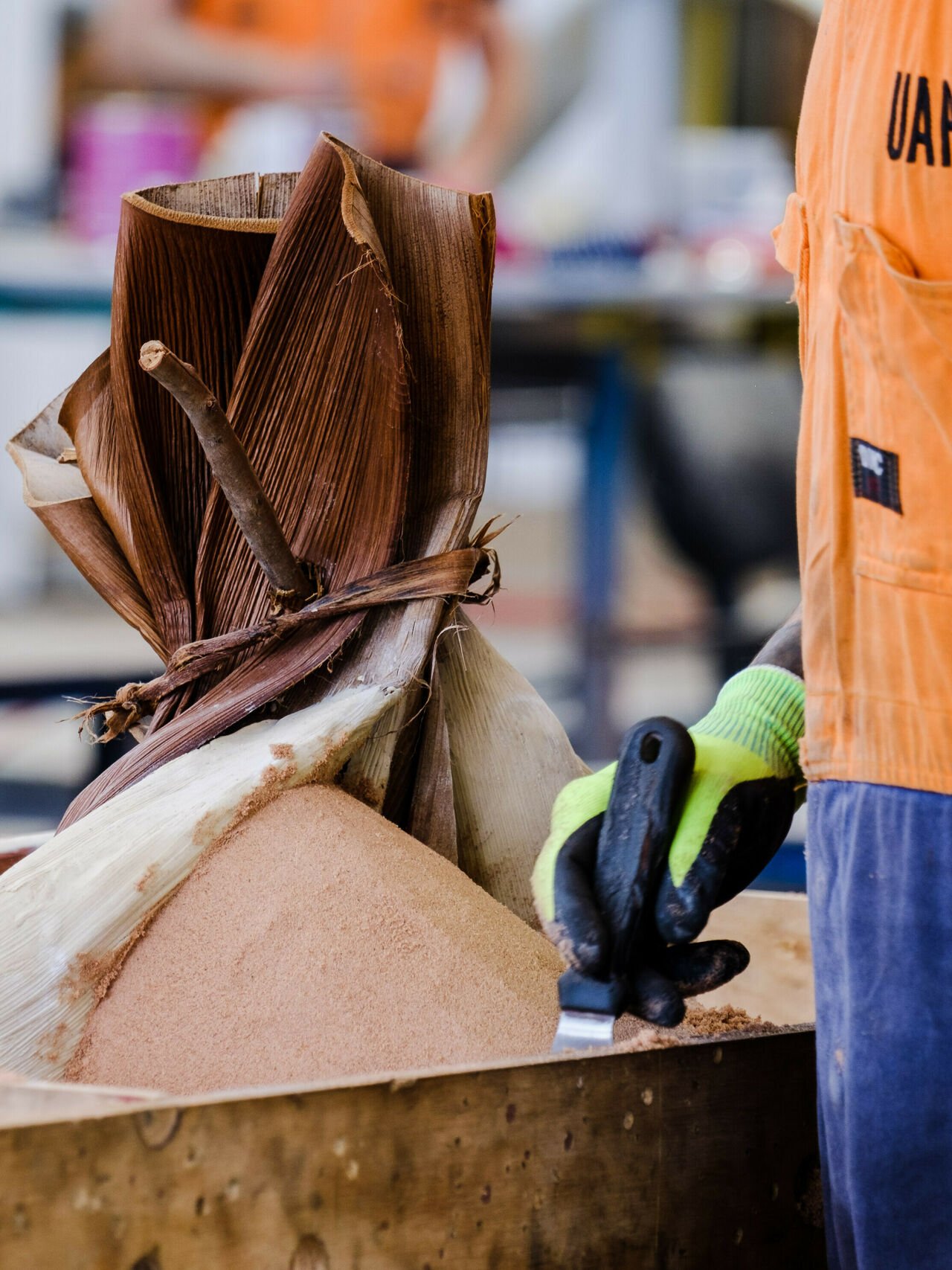
Christian and Jason’s next challenge: to perfectly reassemble the jigsaw puzzle, purely by sight and memory. Each piece had to be returned to its designated position and adhered to the surrounding sections, ultimately forming a Piccabeen basket-shaped hole in the centre of the mould. Large sand moulds generally take Christian and Jason a day and a half to make; this mould took a week.
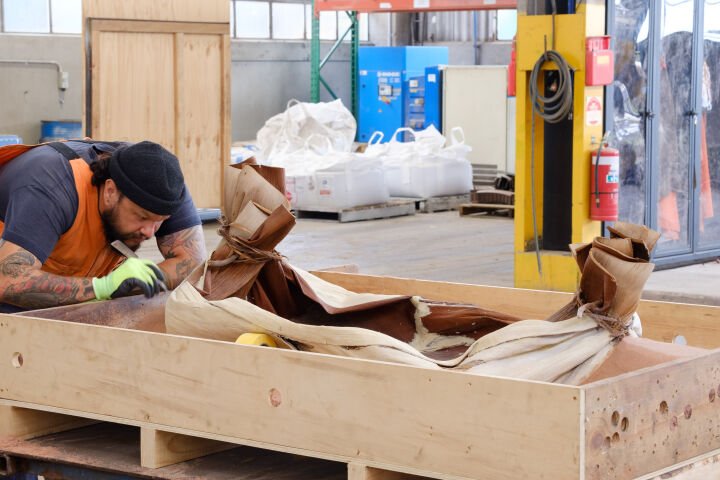
Jason Williams and Christian Bill creating the sand moulds
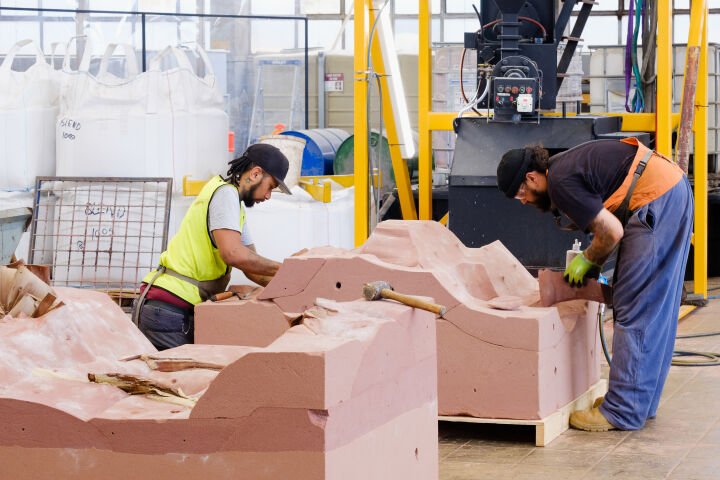
Adapting to the artwork’s shape, the mould was flipped upside down for casting - pouring first into the basket’s broad base, then relying on gravity and the fluidity of molten bronze to flow down to the gathered ends. They were faced, as always, with the risk that the extreme heat and pressure of the molten metal would create movement or leaks within the patchwork mould and result in an uneven or jagged final cast.
Piccabeen Basket foundry pour
The elaborate, obstacle-ridden process culminated in an incredibly accurate bronze Piccabeen basket emerging from the sand mould: a testament to the powerful potential of an artist’s vision, and the skilful determination of craftspeople to bring it to life.
By Grace Dooner
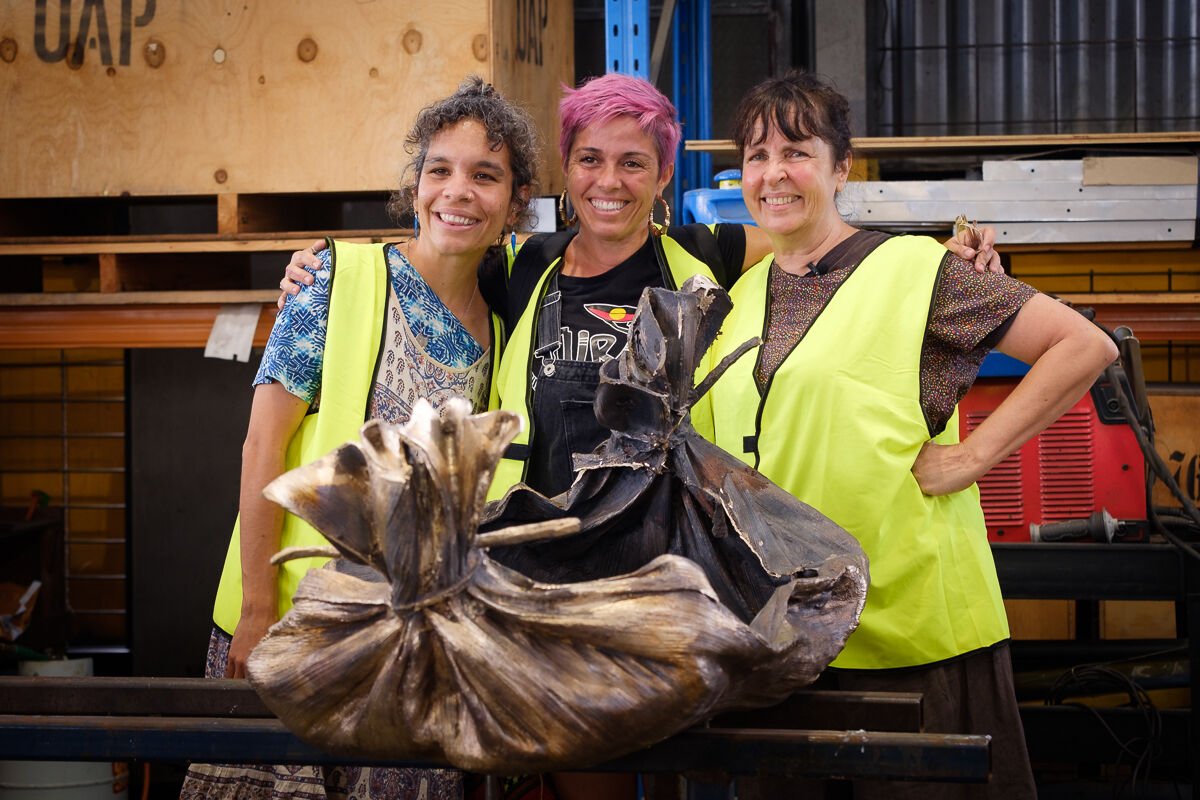
Artists Elisa Jane Carmichael, Libby Harward and Judy Watson
Image Credit: Rachel See
#Related Articles

An Inside Look at Business Development at UAP: How Projects Really Get Started
Before the first design is drafted or the first mold is made, there’s a critical phase of relationship-building, strategy, and problem-solving.
Q&A session with UAP's Kate Skakel, Special Projects
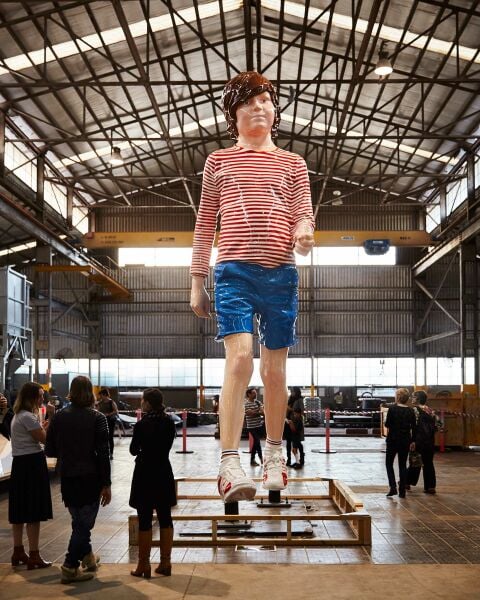
Specialist foundry UAP aims to "Make Art Happen"
UAP is an international production and metal workshop that is responsible for creating everything from large-scale public art or architecture commissions to the iconic Oscars statuettes for the Academy Awards.
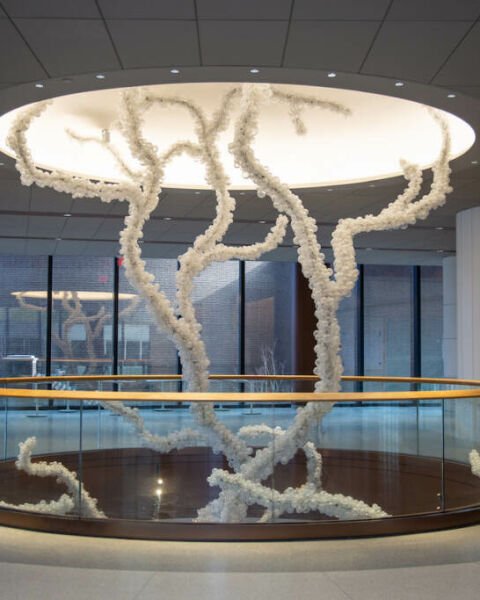
Decoding the Tree of Life: Maya Lin's Sculpture at Penn Medicine's New Pavilion
Its front-facing space, a spacious, round room ringed with glass facing the other buildings in the medical campus, features a 40-foot tall, tree-like structure covered in several hundred translucent glass balls.
